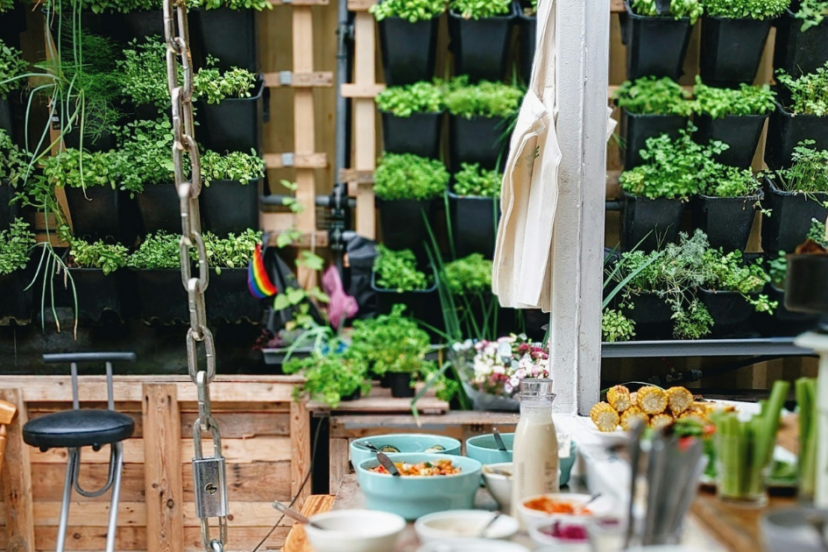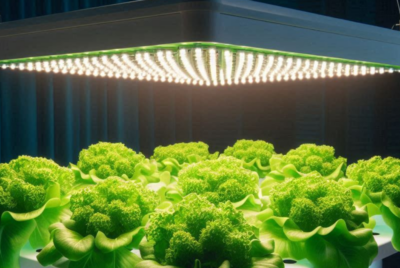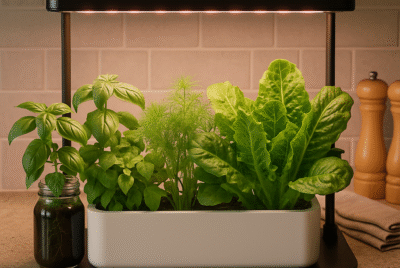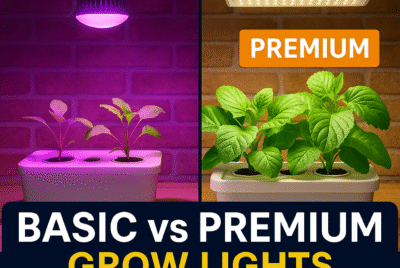Outdoor Hydroponics: Exploring the Future of Sustainable Gardening
Being able to grow your own fresh produce is not only rewarding but also environmentally friendly. That’s why I’m excited to share with you the world of outdoor hydroponics—a revolutionary approach to gardening that combines the benefits of hydroponics with the beauty of nature.
In this article, we will delve into the concept of outdoor hydroponics and explore how it can transform your gardening experience. From understanding the basics to designing your own system, we will cover all the essential aspects you need to know to embark on this exciting journey. So, let’s dig in and discover the future of sustainable gardening!
Embracing Outdoor Hydroponics
Imagine stepping out into your backyard and witnessing a lush garden flourishing without soil. Outdoor hydroponics opens up a world of possibilities, allowing you to cultivate a wide range of plants in any climate and season. Whether you have limited space or simply want to enjoy the convenience and efficiency of soilless gardening, outdoor hydroponics is the answer.
Benefits of Outdoor Hydroponic Systems
Outdoor hydroponic systems offer numerous advantages over traditional gardening methods. By providing precise control over growing conditions, these systems maximize plant growth and productivity while minimizing water usage and environmental impact. Additionally, outdoor hydroponics enables you to grow a variety of crops throughout the year, transcending the limitations of seasonal cultivation.
Understanding Outdoor Hydroponics
A. What is Outdoor Hydroponics?
Outdoor hydroponics is a gardening technique that involves growing plants in a nutrient-rich water solution, without the use of soil, in an outdoor setting. It utilizes various hydroponic systems such as nutrient film technique (NFT), deep water culture (DWC), or ebb and flow to provide the plants with the necessary nutrients and support for their growth.
Unlike traditional gardening, outdoor hydroponics eliminates the dependency on soil as the primary medium for plant growth. Instead, plants are placed in containers or growing channels where their roots are directly exposed to the nutrient solution. This allows for more efficient nutrient uptake and better control over environmental factors, resulting in faster growth and higher yields.
B. Advantages of Outdoor Hydroponics
Year-round Gardening: One of the biggest advantages of outdoor hydroponics is the ability to grow plants throughout the year, regardless of the season. By creating an optimized environment, you can extend the growing season and enjoy fresh produce even in colder climates.
Efficient Use of Space and Resources: Outdoor hydroponic systems are designed to maximize space utilization. With vertical growing techniques and compact setups, you can grow a large quantity of plants in a limited area. Additionally, hydroponics requires up to 90% less water compared to traditional soil-based gardening, making it an eco-friendly choice.
Greater Control over Environmental Conditions: In outdoor hydroponics, you have the power to manipulate and regulate environmental factors such as light, temperature, humidity, and nutrient levels. This control allows for optimal growth conditions and the prevention of common gardening challenges like soil-borne diseases and pests.
Choosing the Right Location

To set up a successful outdoor hydroponic system, selecting the right location is crucial. Consider the following factors when choosing a spot for your garden:
A. Evaluating Sunlight Exposure
Find an area in your yard that receives ample sunlight throughout the day. Most plants require at least 6-8 hours of direct sunlight for optimal growth. Observe the shadows cast by nearby structures or trees to ensure that your plants will receive adequate light.
B. Considering Wind and Temperature Factors
Take into account the prevailing wind direction in your area. Strong winds can affect the stability of your plants and disrupt the nutrient solution’s distribution. Consider installing windbreaks or using trellises to provide protection.
Also, assess the average temperatures in your region. Some plants thrive in warm climates, while others prefer cooler conditions. Choose plants that are well-suited to your local temperature range or make appropriate adjustments to maintain optimal growing conditions.
C. Assessing Space Availability
Evaluate the available space in your yard and determine how much area you can dedicate to your outdoor hydroponic system. Take into consideration the dimensions of the containers or growing channels you plan to use and ensure there is enough room for proper plant spacing and easy access for maintenance.
Designing an Outdoor Hydroponic System
Once you have selected the location, it’s time to design your outdoor hydroponic system. Consider the following aspects:
A. Selecting the Hydroponic Method
Choose the hydroponic method that best suits your needs and resources. Options like nutrient film technique (NFT), deep water culture (DWC), and ebb and flow (flood and drain) offer different advantages and may require varying levels of expertise and maintenance.
B. Determining the System Size
Based on the available space and your gardening goals, determine the size of your outdoor hydroponic system. Consider factors like the number of plants you want to grow and the yield you expect. Start with a manageable size and expand gradually as you gain experience.
C. Choosing Appropriate Containers and Growing Media
Select containers or growing channels that are suitable for outdoor use and can accommodate the size and growth requirements of your chosen plants. Opt for durable materials that can withstand the elements. Additionally, choose an appropriate growing media such as perlite, coconut coir, or rockwool that provides adequate support for the plants’ roots and retains moisture.
Essential Components of Outdoor Hydroponics

To ensure the success of your outdoor hydroponic system, certain components are essential for proper plant growth and nutrient delivery.
A. Nutrient Solution Management
Proper Formulation and pH Levels: Prepare a nutrient solution that is tailored to the specific needs of your plants. Maintain the appropriate pH level to facilitate nutrient absorption and prevent nutrient deficiencies or toxicities.
Managing Nutrient Delivery: Monitor and adjust the nutrient solution’s composition regularly. Replace or replenish the solution as needed to provide a consistent supply of essential nutrients to the plants.
B. Irrigation and Watering
Water Source and Filtration: Ensure a clean and reliable water source for your outdoor hydroponic system. Use filters or water treatment methods to remove impurities that can negatively impact plant health.
Automated Watering Systems: Consider installing an automated watering system, such as drip irrigation or a timed flood and drain system, to provide a consistent and controlled water supply to your plants.
C. Environmental Control
Shade and Temperature Regulation: Shield your plants from excessive heat or direct sunlight by using shade cloth or adjustable covers. Monitor and regulate the temperature within the growing area to create an optimal environment for plant growth.
Protection Against Pests and Diseases: Implement preventive measures to protect your plants from pests and diseases. Use organic pest control methods, install physical barriers, or employ companion planting techniques to discourage pests and promote a healthy ecosystem.
Selecting Suitable Plants for Outdoor Hydroponics
When choosing plants for your outdoor hydroponic garden, consider the following factors:
A. Factors to Consider
Climate Compatibility: Select plants that are suitable for your local climate and can thrive in outdoor conditions. Some plants are more tolerant of heat, cold, or fluctuations in weather, so choose accordingly.
Growth Characteristics: Consider the growth habits, space requirements, and growth duration of the plants. Some plants may be more suitable for vertical gardening or compact spaces, while others may have longer growing seasons.
B. Recommended Plants for Outdoor Hydroponics
Leafy Greens and Herbs: Lettuce, spinach, kale, basil, mint, and parsley are popular choices for outdoor hydroponics due to their rapid growth and high yield potential.
Fruit-Bearing Plants: Tomatoes, peppers, strawberries, and cucumbers are well-suited for outdoor hydroponics. These plants offer the satisfaction of harvesting your own homegrown fruits.
Maintenance and Care
To ensure healthy plant growth and maximum yield, regular maintenance and care are essential. Consider the following aspects:
A. Monitoring Nutrient Levels
Regularly check the nutrient levels in the solution to ensure that your plants are receiving adequate nutrition. Adjust the nutrient solution’s composition based on the plants’ growth stages and specific requirements.
B. Pruning and Trellising
Prune and trim your plants regularly to encourage proper growth and prevent overcrowding. Use trellises or supports to guide the plants’ upward growth and improve air circulation.
C. Pest and Disease Management
Monitor your plants for signs of pests or diseases. Act promptly if you notice any issues by employing organic pest control methods, removing affected plants, or using appropriate treatments to mitigate the problem.
Harvesting and Enjoying the Fruits of Your Labor
The joy of outdoor hydroponics culminates in the harvest and consumption of your homegrown produce. Here are a few tips for a bountiful harvest:
A. Knowing When to Harvest
Pay close attention to the specific harvest times for each plant variety. Harvest leafy greens when they reach full size but before they become overgrown or start to bolt. For fruit-bearing plants, wait until the fruits are fully ripe and ready for consumption.
B. Preparing and Savoring Your Homegrown Produce
Once harvested, take pride in the freshness and flavor of your homegrown produce. Rinse them thoroughly and prepare them in your favorite recipes. Whether it’s a refreshing salad, a flavorful stir-fry, or a delicious smoothie, relish the taste of your hard work and dedication.
Conclusion
Outdoor hydroponics offers a promising and sustainable way to grow your own food while embracing the wonders of nature. By harnessing the power of hydroponic systems in an outdoor setting, you can enjoy year-round gardening, efficient space utilization, and greater control over plant health. With the right location, system design, and plant selection, you can embark on a rewarding journey of growing your own fresh and nutritious produce.
Remember, outdoor hydroponics requires ongoing maintenance and care, but the rewards are worth it. So, seize the opportunity to explore the world of outdoor hydroponics and witness the beauty of thriving plants in a soilless environment.
FAQs
1. How much space is required for an outdoor hydroponic system?
The space required depends on the scale of your system and the number of plants you intend to grow. You can start with a small setup in a backyard or even utilize a balcony or rooftop. Outdoor hydroponic systems can be designed to fit the available space, making them versatile for different environments.
2. Is outdoor hydroponics suitable for all climates?
Outdoor hydroponics can be adapted to various climates, but it’s important to choose plant varieties that are compatible with your specific climate. Some plants thrive in warm climates, while others are more suited to cooler regions. With proper environmental control and plant selection, you can create an optimal growing environment for your chosen plants.
3. Can I use recycled materials for my outdoor hydroponic system?
Yes, you can repurpose or use recycled materials for your outdoor hydroponic system. Many DIY enthusiasts create hydroponic setups using recycled containers, PVC pipes, or other materials. Just ensure that the materials are clean, safe for food production, and provide proper support for the plants.
4. How often should I check and adjust the nutrient solution in my outdoor hydroponic system?
Regular monitoring of the nutrient solution is essential for the health and growth of your plants. Depending on factors such as plant size, water evaporation, and nutrient uptake, you may need to check and adjust the solution every 1-2 weeks. Conduct pH and nutrient tests to maintain optimal levels and make adjustments as necessary.
5. Can I grow a variety of plants together in the same outdoor hydroponic system?
Yes, you can grow multiple plant varieties together in the same outdoor hydroponic system. However, it’s important to consider their individual growth requirements, nutrient needs, and compatibility. Ensure that plants with similar environmental preferences and growth rates are grouped together to promote harmonious growth and maximize efficiency.
Remember, outdoor hydroponics is an exciting journey that allows you to cultivate your own fresh produce while embracing sustainable gardening practices. Enjoy the process, experiment with different plants, and savor the rewards of your outdoor hydroponic garden. Happy growing!
*We may earn a commission from purchases made through our links, at no cost to you. This does not affect our product recommendations. Please see our disclosure to learn more.




